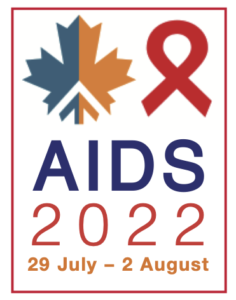Doxycycline PEP significantly reduces STIs in people at high risk of infections
3 August 2022. Related: Conference reports, Coinfections and complications, World AIDS 24 Montreal 2022.
Simon Collins, HIV i-Base
 One of the first presentations at AIDS 2022 included using the antibiotic doxycycline in people at high risk of sexually transmitted infections (STIs). [1]
One of the first presentations at AIDS 2022 included using the antibiotic doxycycline in people at high risk of sexually transmitted infections (STIs). [1]
This randomised, open-label study, planned to enroll 780 people attending sexual health clinics in Seattle or San Francisco in two cohorts; one was HIV positive, and the other HIV negative and on PrEP.
However, the study was unblinded early due to a recommendation from the Data and Safety Monitoring Board (DSMB) in May 2022 based on significantly reduced STIs in the active arm of both cohorts.
At the time of unblinding, the study had randomised 501 gay men (96%, n=482 and trans women (4%, n=19) who have sex with men 2:1 to either 200 mg doxycycline or standard of care. The primary endpoint was a diagnosis of gonorrhoea, chlamydia or syphilis within a three-month period.
Participants in the active arm were asked to take a single dose of doxycycline as soon as possible but within 72 hours of having sex (without a condom) and to not take more than one dose during 24 hours. Participants were given three months of doxycycline to keep at home, with standard advice to take with a glass of water and to stay upright for 30 minutes.
Results were stratified by HIV status (n=174) and use of PrEP (n=327).
Overall, baseline demographics were similar in the two cohorts. This included median age 38 (IQR: 32 to 47), with 67% white, 8% Black, 11% Asian, 15% other, and ethnicity included 30% Hispanic/Latinx.
There were a median of 9 male partners (IQR: 4 to 17) during the previous three months. At least one-third reported recent recreational drug use/chemsex during the same period. Rates of STIs during the previous 12 months were high: 69% gonorrhoea, 58% chlamydia and 20% syphilis.
Results in the intent-to-treat (ITT) analysis reported significant overall reduction in the risk of STIs in the active arm: RR 0.35 (95%CI: 0.27 to 0.46), p<0.0001), with similar results in each cohort.
The most common STIs were gonorrhoea and chlamydia, mainly in throat or rectum, with dual infections common. However, only 15% to 28% of infections were symptomatic, especially in the active arm.
Reductions in the active arm for each STI, and in both cohorts, were highly significant in each three-month period.
Safety results were also good with no grade 3 side effects associated with doxycycline and 88% of participants reporting the intervention to be acceptable or very acceptable.
Self-reported adherence was also high (taken for 87% of appropriate times). Each month, half the group took doxycycline <10 times, 30% took it 10 to 20 times and 16% took >20 doses (with some approaching daily dosing).
Although the majority of resistance tests are still ongoing, the US background rate of approximately 20% population tetracycline resistance to gonorrhoea was also seen in this study. Resistance was linked to reduced efficacy of doxycycline but not to development of new resistance.
comment
The reductions in STIs by more than 60% in people with very high background rates of STIs is impressive and significant.
Background rates of tetracycline resistance and sensitivity are also likely to be important.
Background resistance to gonorrhea was significantly lower in this US study compared to roughly 50% reported in the French IPERGAY substudy. In IPERGAY, doxycycline PrEP significantly reduced rates of chlamydia and syphilis, but not gonorrhoea. [2]
Rates in London are comparable or higher to those in Paris.
The latest GRASP surveillance data published for 2020 showed tetracycline resistance in England and Wales at 65%, with the overall trend of increased resistance. [3]
This could be due to the change to using doxycycline for chlamydia in the UK. The CDC has also now changed its guidelines to use doxycycline so it is likely that resistance will also increase in the US.
It will be important to understand the effect of intermittent doxycycline use on the gut microbiome or other long-term outcomes. Also, whether other bacteria are affected by tetracycline resistance.
The results from this US study might need to be confirmed in a UK setting, but should at least be considered given the high rate of STIs experienced in some populations.
References
- Luetkemeyer A et al, Doxycycline post-exposure prophylaxis for STI prevention among MSM and transgender women on HIV PrEP or living with HIV: high efficacy to reduce incident STI’s in a randomized trial. AIDS 2022, 29 July – 2 August 2022.
https://programme.aids2022.org/Abstract/Abstract/?abstractid=13231 (abstract)
https://conference.aids2022.org/media-2109-co-chair-s-choice (webcast) - Molina JM et al. Post-exposure prophylaxis with doxycycline to prevent sexually transmitted infections in men who have sex with men: an open-label randomised substudy of the ANRS IPERGAY trial. The Lancet Infectious Diseases. 2018;18(3):308-17.
https://pubmed.ncbi.nlm.nih.gov/29229440/
This report was first published on 30 July 2022.

